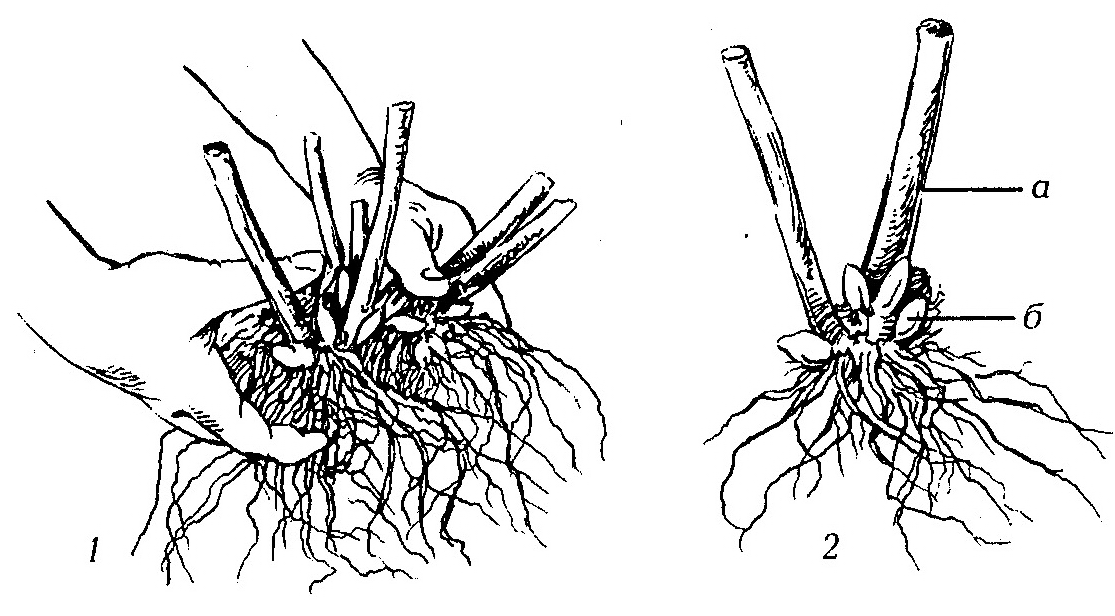Content:
Phloxes are unique herbaceous plants belonging to the Cyanus family. Today the species has more than 70 varieties, of which approximately 40 are cultivated. For the first time, Europeans began to breed phlox in the 18th century. Thanks to the painstaking work of breeders, there are already more than 1.5 thousand varieties of phlox. The main features of the species are not only bright flowering, but also unpretentious care. They also have long flowering and incredible aroma. Features of flowering plants and the reproduction of phlox by cuttings in summer is the topic of today's article.
Description and characteristics of the species
Phloxes are quite diverse even within their own species, due to the climatic and weather conditions in which they grow. For example, when a crop is grown at an altitude of about 4 thousand meters, an agronomist receives undersized bryophytes: their height does not exceed 25 cm, the stems branch and are abundantly covered with evergreen leaves.
In favorable conditions, it is possible to contemplate erect bushes, the height, depending on the variety, can vary from 30 to 180 cm. There are also subshrubs that can surprise with their lush color.
By flowering time, the following varieties are distinguished:
- Early (spring).
- Middle (summer).
- Late (summer-autumn period).
In nature, erect varieties prevail. They are abundantly covered with foliage, while the plate of each leaf has an elongated ovoid or oval-lanceolate shape. The diameter of phlox flowers, as a rule, reaches a size of 2.5 to 4 cm, the shape is characteristic of a tubular-funnel-shaped. Complex inflorescences are formed, each with about 90 flowers. After flowering, an oval box is formed - the fruit.
General rules for caring for phlox at home
Basic rules for planting and caring for annual and perennial phloxes, which should be followed.
- Phlox willingly grow on any type of soil, but most of all they like light loamy ones. If the soil is enriched with lime, then the flowering will be lush, and the greenery will be powerful.
- Plots before planting phlox must first be prepared. They should be dug deep in the fall. For early low-growing varieties, it is required to remove all rhizomes so that they do not "strangle" the culture in the future.
- Phlox are light-loving plants, so the site should be sunny. However, there are hybrid varieties that, under the influence of direct sunlight, lose their bright color, they are recommended to be grown in partial shade.
- It is recommended to alternate phlox with dark flowering with light varieties. Thus, at any time of the day they will complement each other favorably.
- These plants are extremely easy to care for. It is regularly required to loosen the peri-stem circle, but not deeply, so as not to damage the root system, as well as weed from weeds. For lush flowering, it is recommended to regularly apply organic and mineral fertilizers to the soil.
- Paniculate phlox grow well in the sun and in partial shade. Low-growing varieties are best grown in well-lit areas, otherwise abundant and prolonged flowering cannot be expected. To build up green mass and abundant flowering, do not forget about fertilizers.
- The plant does not need frequent watering, but they should be abundant, especially if there is a sultry heat. It is recommended to water in the afternoon, in the late afternoon.
- When preparing for the winter, perennial plants are covered with soil and covered with rotted manure or humus. The layer thickness should be at least 12 cm, it will protect the root system from freezing.
- To prevent the defeat of infectious, viral or fungal diseases, in the fall the plant must be treated with a solution of fungicides, not forgetting also the soil near the bushes.
- If the plants have formed fruits, but the seeds did not have time to ripen before the onset of cold weather, the bushes can be dug up and transplanted into pots for home flowers. The plant will feel comfortable enough growing on the windowsill.
To prevent this, it is necessary to cut off the entire aboveground part, and mulch the root with a layer of peat, manure or humus. If the winter is snowy and the thickness of the snow cover is more than 50 cm, the plant will calmly survive frosts below -30 degrees.
How to propagate phlox cuttings in summer
Phlox are one of the most common flowering plants in summer cottages. Consequently, many novice agronomists are concerned with the question of how to cut phloxes in the summer, how to breed perennial phloxes with cuttings. There are several ways, about each in more detail.
Stem cuttings phlox
This method of reproduction of phlox is considered one of the simplest, even a novice agronomist can implement it. For better rooting of phlox cuttings, manipulation is best carried out in the third decade of May - the first two decades of June.
For cuttings it is necessary to select the most developed green shoots. In this case, the plant must be inspected in advance for the presence of pathologies, damage or pests. Each shoot used must have 2 nodes. The bottom cut is immediately after the knot, and the top cut is a few centimeters higher. All foliage must be removed from the bottom side.
Planting material can be planted in wooden boxes or immediately open soil, which should be fertile and loose.
It is best for a plant to propagate in this way, since rooting occurs in 100% of cases. Planting material that was cut in July - August must be planted in a greenhouse.
Propagation by leaf cuttings
Cutting phlox in July is best done using the sheet method. To do this, you will need to cut off a leaf from a strong stem with a sharp knife, along with a small piece of the stem and an axillary bud.
After that, the prepared seed is planted in boxes filled with fertile nutrient soil. Cuttings must be planted at intervals of about 5 cm, the immersion depth is not more than 2 cm.
After planting, the plants must be watered, covered with glass or polyethylene fiber, and placed in a dark but warm place. The optimum temperature is + 18-20 degrees. The soil must always be moist.
Further agrotechnical manipulations are as follows: irrigation from a spray bottle with warm water and airing.
It will take about a month for the cutting to take root. For the active formation of bushiness, the top should be pinched off. Otherwise, further care is the same as for stem propagation.
How to propagate phlox by root cuttings
Reproduction of phlox by cuttings in August is best done by the root method. This method is not so common, since it is even more laborious than the two previous ones. This method is usually implemented in the event that it is necessary to get rid of pests, for example, stem nematodes.
To do this, in the third decade of August - the first two decades of September, they dig out the culture and separate several of the most powerful roots, the length of each fragment should be at least 5-6 cm.
Then they are planted in pre-prepared boxes with fertile soil. It is necessary to ensure that the thickened part of the root is located above the thin one. Pour a layer of sand no more than 5 cm thick on top of the root cuttings.
At first, the boxes can be stored outside, but when the temperature drops, they should be moved to a dark basement. The temperature should not fall below + 2-3 degrees, the soil should be constantly moistened. As a rule, already in February - March, the boxes need to be moved to a warmer room and prepared for the upcoming transplant into open soil.
Phlox are amazing plants that, during flowering, create a feeling of a fairy tale near them. Recently, this species has been in demand for decorating bouquets and other flower arrangements; phloxes are often combined with chamomiles, chrysanthemums, etc.















